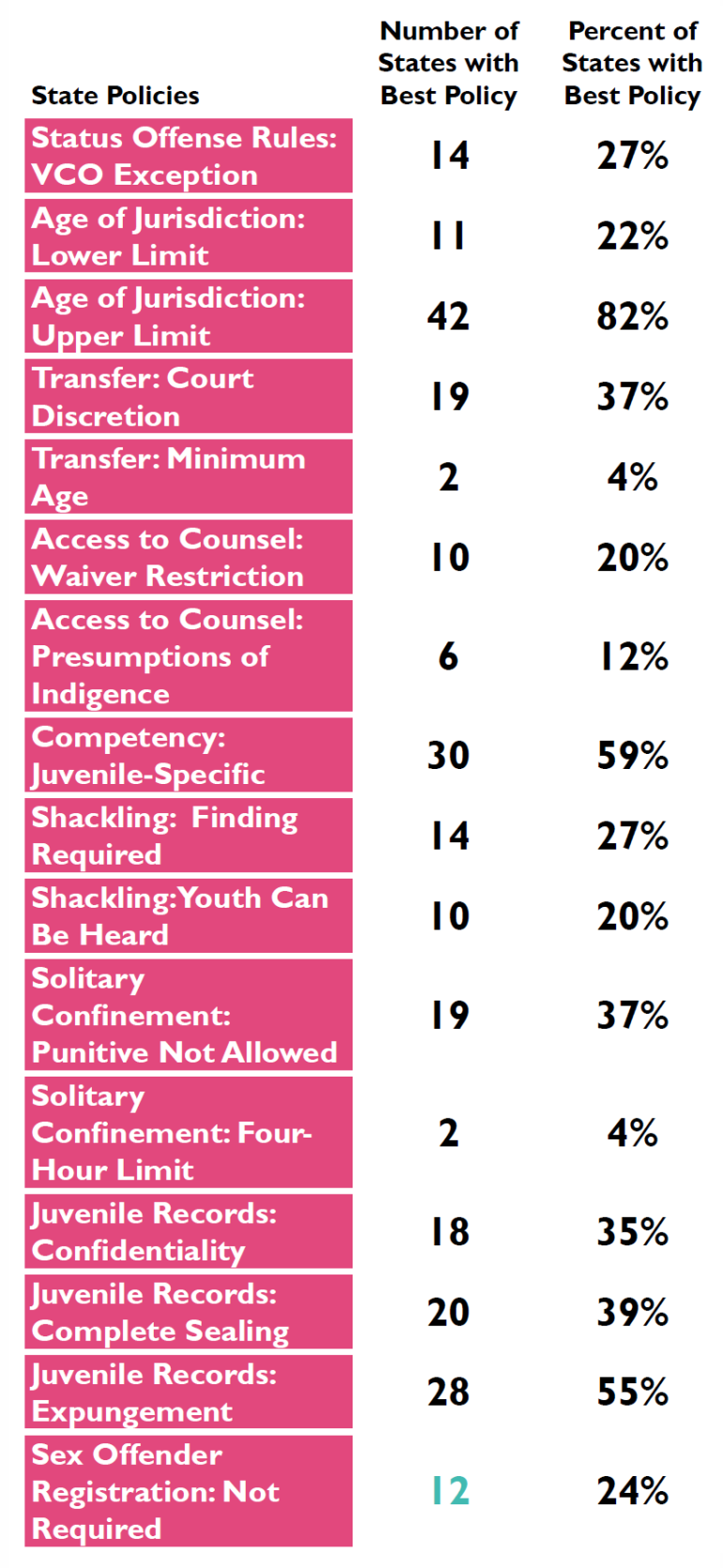The adolescent development research that underlies the latest wave of juvenile justice reform should remain the foundation for future improvements, says a new report from the MacArthur Foundation.
As the foundation winds down its investment in juvenile justice reform this month, the report tracks how widely states have put developmentally appropriate policies in place.
 The survey found every state has adopted at least one policy, such as limiting courtroom shackling or allowing an adult court transfer only at the court’s discretion. Though more work needs to be done, the states’ performance is a sign of “undeniable and widespread” progress, said the report.
The survey found every state has adopted at least one policy, such as limiting courtroom shackling or allowing an adult court transfer only at the court’s discretion. Though more work needs to be done, the states’ performance is a sign of “undeniable and widespread” progress, said the report.
[Related article: MacArthur Foundation Urges Major Changes in Juvenile Justice System]
Still, the authors cautioned that today’s reforms could be undermined by economic, cultural or practical considerations; crime rates rise and fall, demographics change, and program implementation can be uneven.
States and other reformers should therefore remain true to the principles of developmentally appropriate and evidence-based practices that have guided the foundation’s juvenile justice work for nearly 20 years, said Laurie Garduque, director of justice reform at the foundation.
The foundation began its work in a handful of states but now works in nearly every one through its programs and partnerships.
“We feel we’ve created a platform for continued progress,” Garduque said.
 Since 1996, the foundation’s investments in juvenile justice research and practice have helped establish the widely accepted idea that adolescents are different than adults in areas such as culpability, competency and capacity for rehabilitation.
Since 1996, the foundation’s investments in juvenile justice research and practice have helped establish the widely accepted idea that adolescents are different than adults in areas such as culpability, competency and capacity for rehabilitation.
Garduque said leadership is critical to states’ progress but there is no ideal mix of conditions on the ground that jump-start reform.
“Regardless of a state’s starting point, you can make progress in juvenile justice reform,” she said.
The report looks at nine policies across five key areas: minimizing contact with the system, keeping youth in the appropriate justice system, protecting youth inside the courtroom, adopting developmentally appropriate confinement policies and removing obstacles to reintegration in the community.
In some cases, very few states have adopted the policies. South Dakota and Utah are the only states to allow transfer to adult court only for youth 16 and older. Pennsylvania and Delaware are the only two to set a time limit of four hours on each episode of solitary confinement.
On the other end of the spectrum, 42 states keep young people in juvenile court until age 18, and 30 have a juvenile-specific competency statute.
Overall, the reforms have had positive effects on both individuals and society, according to the report.
“Because the reforms are embedded in developmental knowledge, young people are better able to reach their potential and become responsible members of society, decreasing recidivism and making communities safer and healthier — a range of positive returns that is both broad and deep,” the report said.
Related:
Models for Change — A Decade of Advancing Juvenile Justice
Temper Risk and Needs Assessments With Positive Youth Development
Report: Supreme Court Opinions Changing Juvenile Justice Landscape Beyond JLWOP